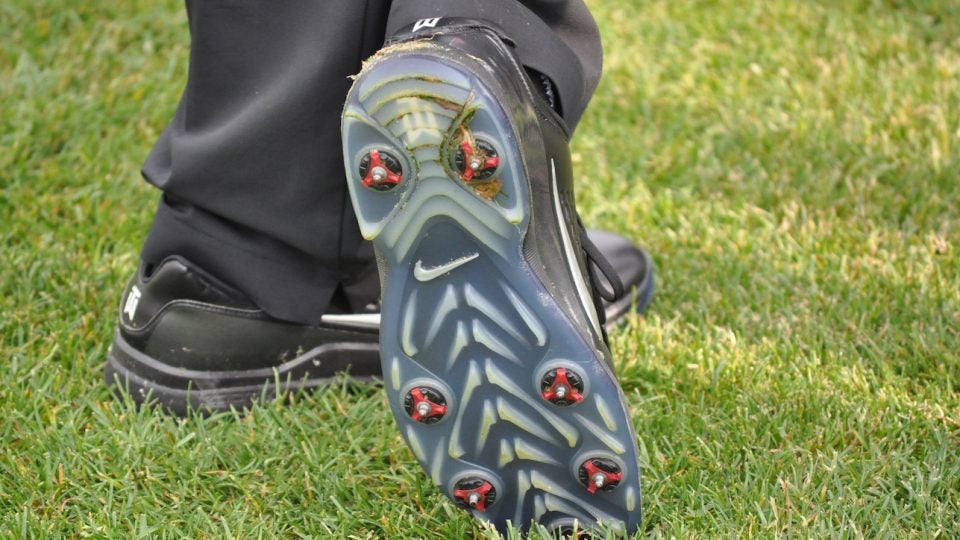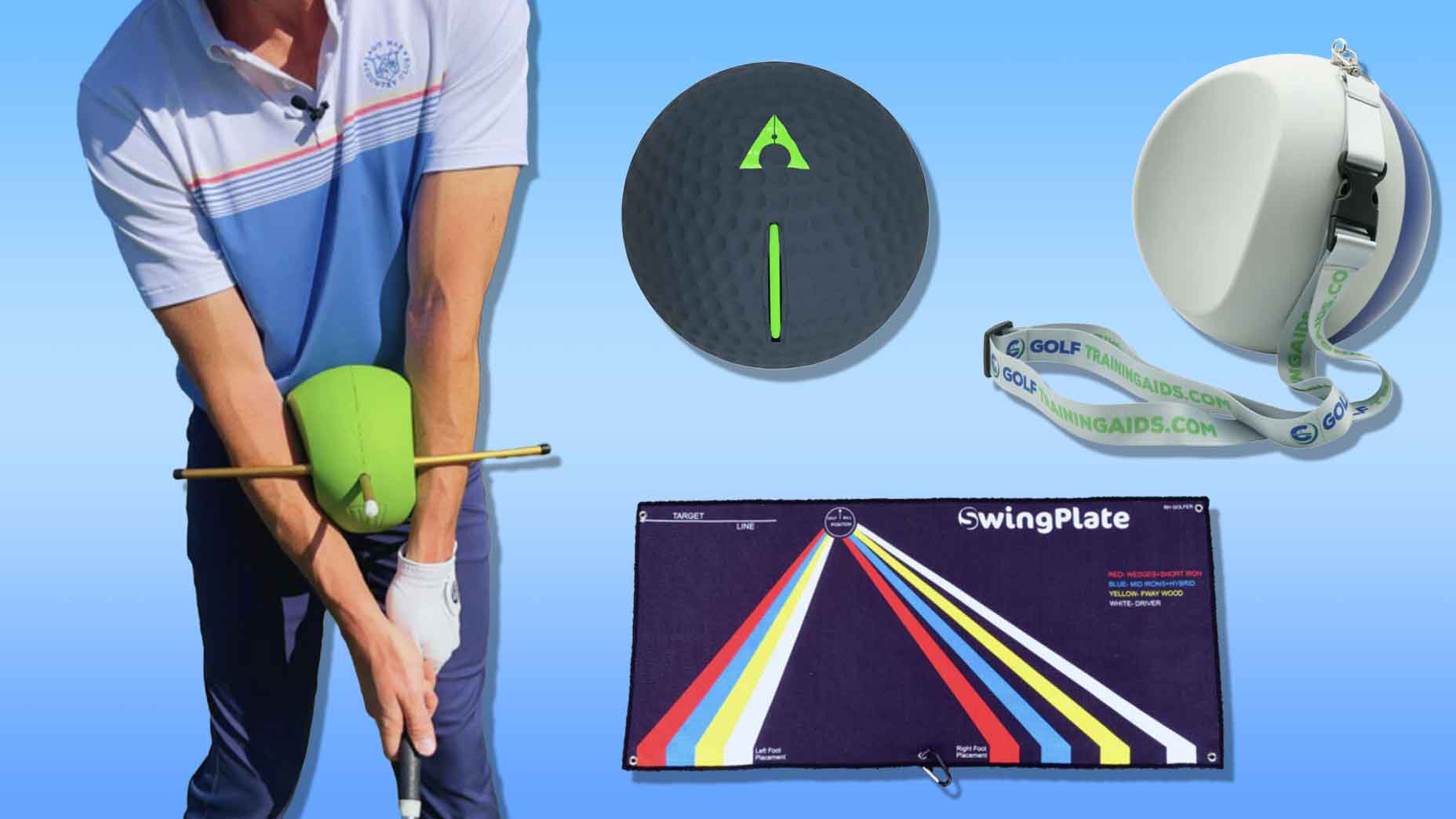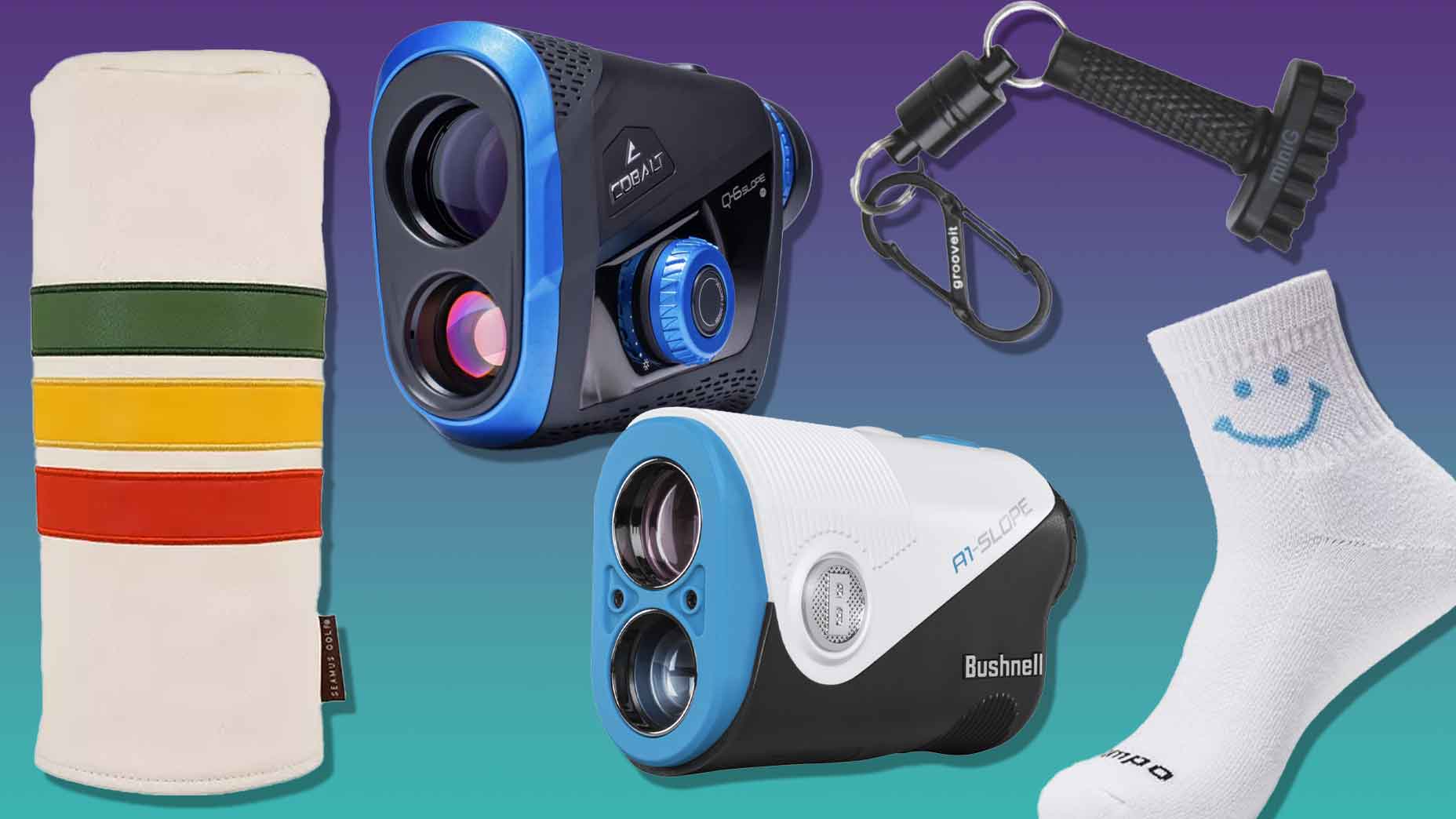 2 awesome rangefinders I loved (but lost!) in 2025
2 awesome rangefinders I loved (but lost!) in 2025
The reason Tiger Woods continues to wear metal spikes

DUBLIN, Ohio — For years, the distinct crunching sound of metal meeting concrete could be found at golf courses across the country. Metal spikes helped players stay anchored to the ground during the swing, but the added traction came at a significant cost, tearing up greens, wooden bridges, carpeted surfaces, and walkways in the process.
Then along came the original Softspike in the early ’90s. Initial versions of the plastic spike didn’t offer identical traction to its metal counterpart, but it was good enough for golf course operators to embrace the course-friendly cleat. The spike war was on.
These days, it’s difficult to find a course that will allow metal spikes — unless you’re a tour pro.
ADVERTISEMENT
While most courses are soft-spike facilities, the venues hosting PGA Tour events and major championships make an exception for the best players in the world. That includes Tiger Woods, who still wears a hybrid version from Champ called the Pro Stinger. The spike combines a steel tip with a durable polymer outer — more commonly found on soft spikes — that allows Woods to rip through the ball without having to worry about any slippage.
Woods has worn metal spikes for the majority of his career, with the exception of a brief period at the end of 2018 when he tried a soft-spike version to combat sore ankles.
Big Cat’s kicks are spectacular. pic.twitter.com/ae0oLgrBFK
— Jonathan Wall (@jonathanrwall) November 23, 2018
But given Woods’ old-school tendencies, it was only a matter of time before he went back to metal. Woods’ shoes this season have all featured the hybrid Pro Stinger spike — a sure sign that his ankles can handle the torque when he takes a big cut with the driver.
As for the number of players still using metal spikes on the PGA Tour, the figure likely hovers around 20 percent on a given week. Soft spikes are exponentially better than the original creation introduced in 1992, but there’s still a place for the metal version in the professional ranks. Just ask Tiger Woods.
ADVERTISEMENT






